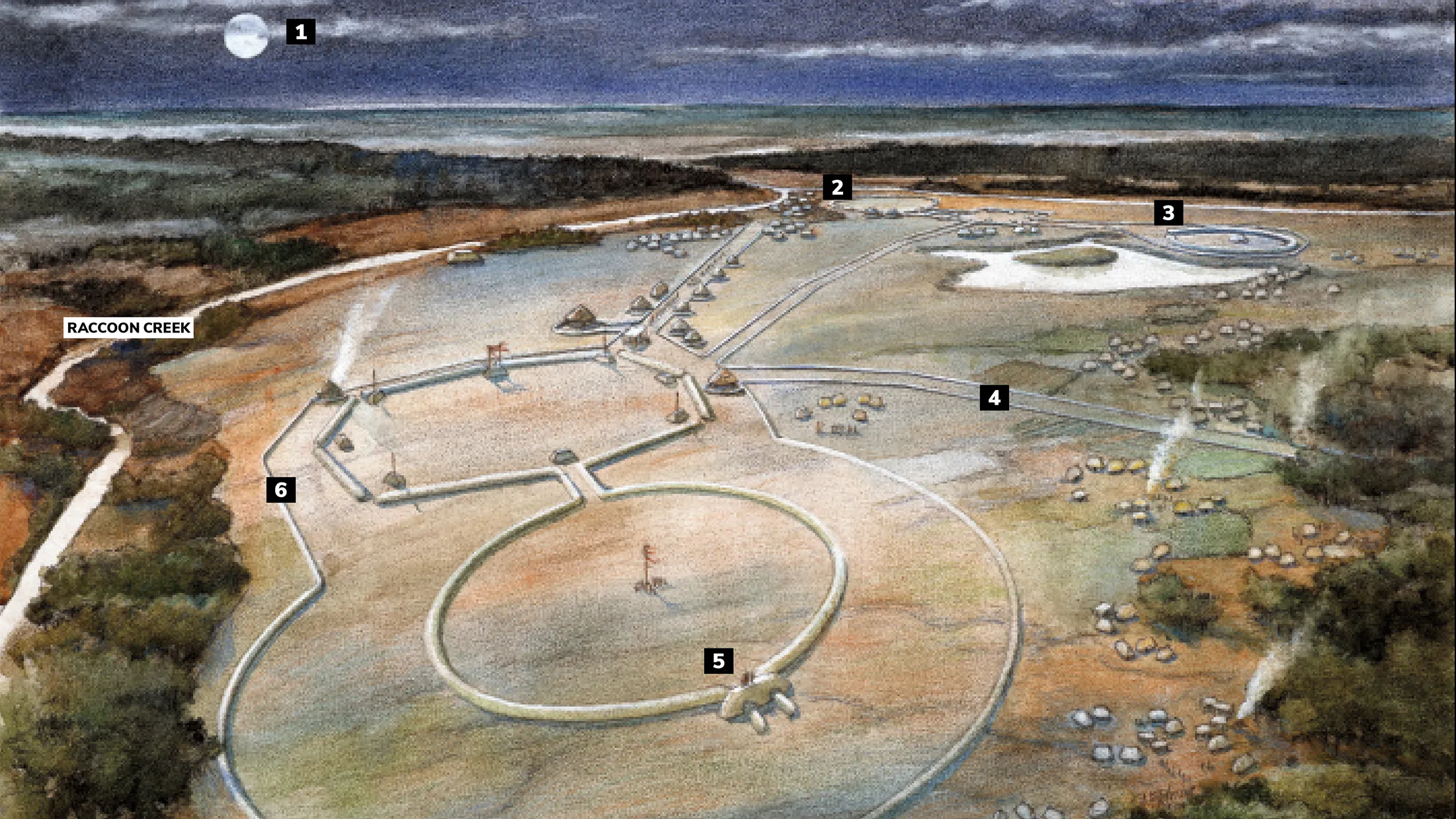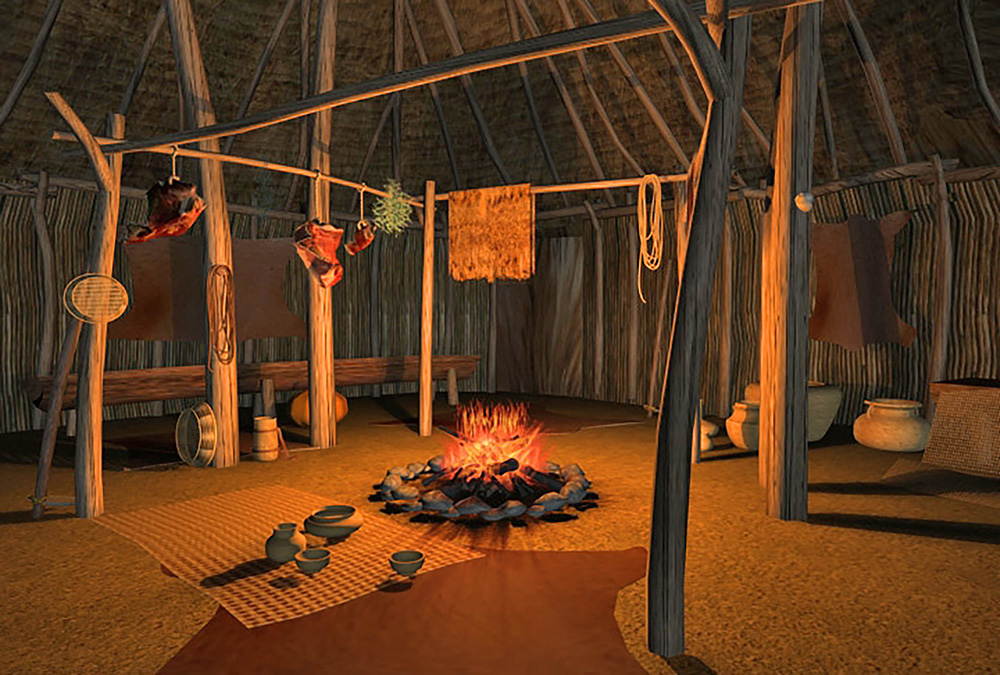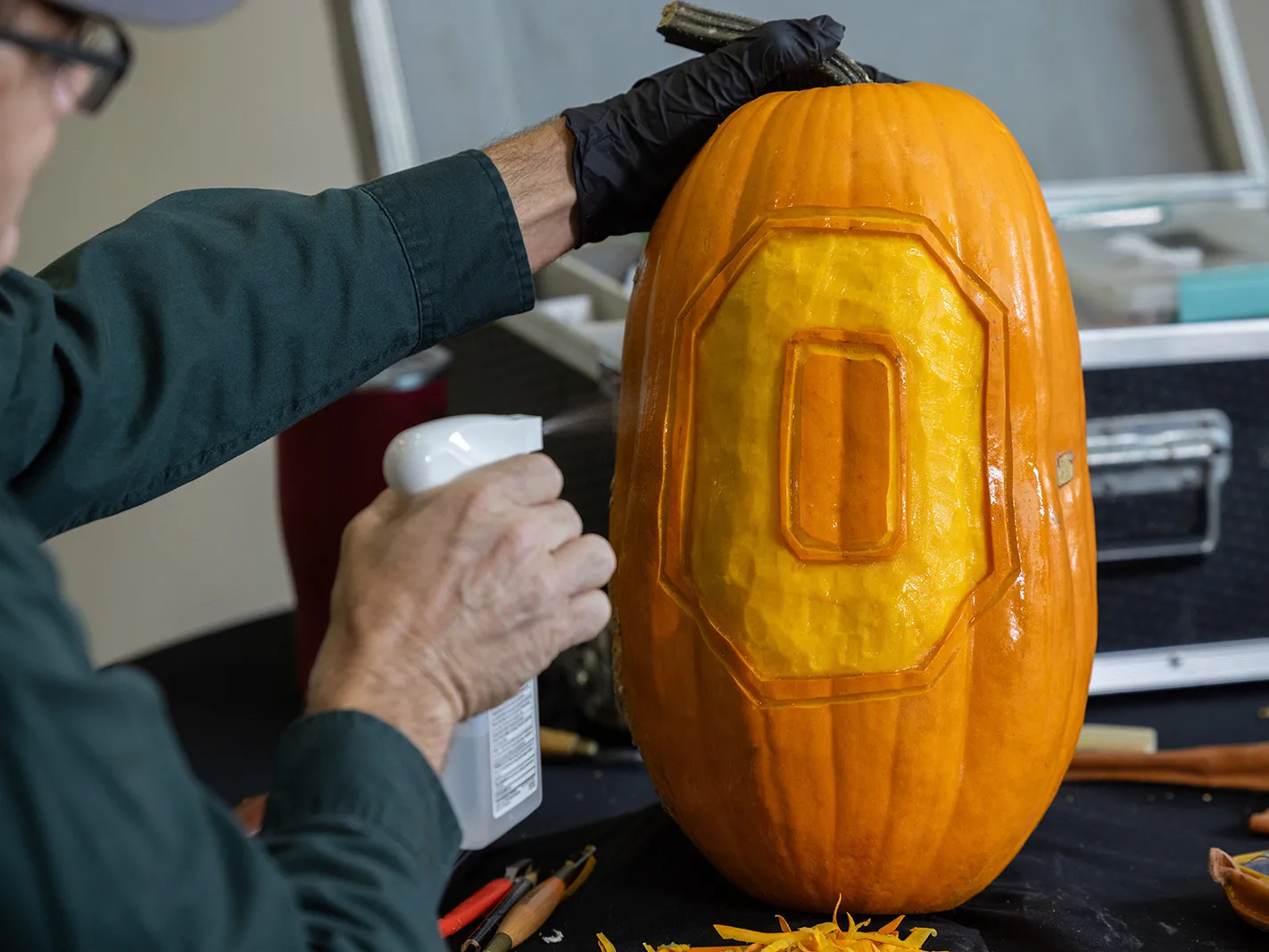Meet the Hopewell masterpiece: The Newark Earthworks
Today, they might look like grassy hills, but this sacred place was once the Mecca of North America. Here are the hidden science and a visitors’ guide.

1. Lunar alignment
In the 1970s, researchers Ray Hively and Robert Horn discovered that the octagon-circle compound aligns with all eight key rise and set points of the moon during its 18.6-year cycle.
2. Cherry Valley Ellipse
This large oval enclosure was the burial ground of the Newark Earthworks, including at least 12 conical mounds, the largest of which was 140 feet long, 450 feet wide and about 20 feet high.
3. Great Circle
This is one of the largest and best preserved of the Hopewell geometric sites, with a diameter of nearly 1,200 feet and enough space within it to hold four football fields. Given its size, archaeologists suspect it was a gathering place for ceremonial events.
4. Great Hopewell Road
Lepper has hypothesized that a 60-mile walled pathway joined the Newark Earthworks to the Chillicothe area, home of several Hopewell mounds. If true, the road would make a “profound ceremonial connection” between the two sacred Hopewell places, Lepper says.
5. Perfect perch
Every 18.6 years, you can stand on this platform—called the Observatory Mound—look to the east and see the moon rise directly through the passageway linking the octagon and the circle.
6. Embedded geometry
Within the Hopewell’s precisely measured geometric earthworks, you can find some hidden mathematical connections. For instance, the octagon has a perfect square inside it, Lepper says, and the area of that square is equal to the area of the Great Circle.
x
Life at the mounds

Hopewell houses
Lepper theorizes that the earthwork builders occupied temporary housing near the Newark complex while visiting the area to participate in ceremonies or help construct the mounds. He bases this theory on what’s been found at the Fort Ancient Earthworks, a Hopewell hilltop enclosure in Southwest Ohio. The Hopewell lived in oval-shaped, wood-frame houses, about 15–20 feet long, with woven roofs and clay hearths inside used for both heat and cooking, says archaeologist Bill Kennedy, site manager for the Fort Ancient Earthworks.

Artifacts from all over
Ohio was the center of the Hopewell world. Excavations of mounds have uncovered obsidian (above) from Yellowstone, shells and shark teeth from the Atlantic coast, copper from southern Canada, and mica from the Blue Ridge Mountains. Lepper believes that Newark and other monumental Hopewell sites in Ohio were places of pilgrimage and travelers brought these artifacts with them as spiritual offerings from their homelands.
x
A visitors’ guide
For education and awe, nothing beats seeing in person the archaeological wonders that compose the Hopewell Ceremonial Earthworks, the first and only Ohio historic attractions to earn a prestigious UNESCO World Heritage site designation. Here are seven open-to-the-public highlights. — Randy Edwards
Great Circle Earthworks
455 Hebron Road, Heath: An earthwork large enough to surround the Great Pyramid of Giza, with a 200-foot-wide gateway and walls up to 13 feet high. Interpretive museum open 10 a.m. to 4 p.m. Thursday to Saturday.
Octagon Earthworks
125 N. 33rd St., Newark: The grandeur and sacredness of this site is evident in the two large geometric enclosures, a circle and an octagon, connected by a parallel-walled passage. Visitor center open 11:30 a.m. to 1:30 p.m. Wednesday to Sunday. Free tours at noon those same days.
Mound City
16062 State Route 104, Chillicothe: Twenty-five reconstructed ceremonial burial mounds of various shapes and sizes enclosed by a low wall. Grounds open dawn to dusk, visitor center open 9 a.m. to 4 p.m. daily.
Hopewell Mound Group
4731 Sulphur Lick Road, Chillicothe: Little remains of the mounds here, most of which were either plowed or excavated a century ago. The National Park Service has begun mowing the vegetation to follow the outline of the original shapes. Grounds open dawn to dusk.
Hopeton Earthworks
990 Hopetown Road, Chillicothe: The mounds also have mostly been lost to farming, but “interpretive mowing” allows visitors to see the original outline of the mounds. Grounds open dawn to dusk.
Seip Earthworks
7058 US 50 East, Bainbridge: Most of the earthworks have been plowed to ground level, but the Central Mound, the third largest Hopewell burial mound at 240 feet by 160 feet, was reconstructed. Grounds open dawn to dusk.
Fort Ancient Earthworks
6123 State Route 350, Oregonia: Neither a fort nor built by the Fort Ancient culture, the impressive ceremonial enclosure sits atop a high bluff overlooking the Little Miami River. Grounds and visitor center open 10 a.m. to 5 p.m. Wednesday to Saturday and noon to 5 p.m. Sunday.
Mounds of meaning
Hear Ohio State experts share more about the complicated history of the Newark Earthworks complex in a Now at Ohio State podcast episode.





